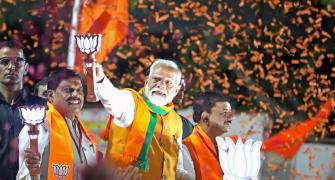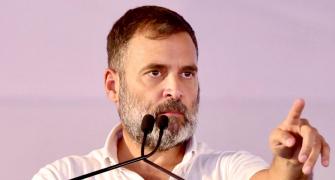When we talk about urbanisation, the image that commonly comes to our mind is that of mega-cities like Delhi or Mumbai. An important fact central to the present day demographic transition that often gets hidden in the glitter of mega-cities is that most of the urban population growth in India (and the world over) is taking place in smaller cities of less than 500,000 population, a trend reinstated by the recently released State of World Population 2007 Report.
Highlighting the fact that 52 per cent of the world urban population continues to live in smaller cities, the report said that small cities will dominate over larger cities in terms of urban growth in the foreseeable future.
Currently in India, 180 million or more than 60 per cent of the total urban population lives in cities and urban agglomerations with less than 10 lakh (1 million) population. These smaller and mid-sized cities are estimated to grow very fast over the next two decades for several economic reasons.
A recent real estate study also listed smaller cities such as Chandigarh, Nagpur, Kochi and Meerut as the future points of growth for the Indian economy using indicators such as population growth, tax collections and consumption patterns.
Indeed, globalisation is attracting big businesses to the smaller towns. There is a growing availability of employment in these smaller cities in the booming services sector, IT, telecom and automobile industry, making them attractive destinations for migrants. Natural population increase and the reclassification of rural areas into urban ones are also significant contributors to urban growth in many regions.
However, such a population transition is a cause of concern. Small and mid-sized cities are massively underserved when it comes to housing, health infrastructure, transportation, piped water, waste disposal and other services. Like in most parts of the world, mega-cities have been receiving much of the development focus (read investment) whereas the condition in smaller urban areas has been deteriorating.
These cities not only lack human and financial resources and municipal capacity, but also negotiating capacity with the central and state governments, investors and other stakeholders, including international agencies, for opportunities and funds.
For example, if we consider health as an important indicator of development, mega-cities have financially and institutionally stronger municipal corporations, which have been managing major health programmes such as the World Bank-funded maternal and child health programme, India Population Project V and VIII, and other bilateral assistance on urban health.
On the other hand, small and medium-sized cities have grossly sub-optimal urban health infrastructure. For instance, in a small but fast growing city like Dehradun, for a population of over 600,000, there are only nine urban health posts and two urban family welfare centres.
Dehradun has had an unprecedented population growth rate of 66 per cent over the decade; thus it is evident that the present health facilities there are grossly inadequate to cater to the city's rapidly growing population.
Another manifestation of the burdening of urban infrastructure and rise in urban poverty in the small- and middle-level cities is the proliferation of slums. For instance, Ranchi has over 350,000 persons or 34 per cent of the city's population living in slums.
Sixty per cent of the city's urban poor do not have access to safe drinking water; 90 per cent do not have access to toilets; and 64 per cent do not have drains in the area and even a basic solid waste collection system is absent in these slums.
There is no doubt that the growth of small- and mid-sized cities is good for India's overall economic growth. However, we need to learn from the mistakes made while planning infrastructure for our metros. Thoughtful and sensitive urban planning is a must where new growth centres are identified so that aesthetic, healthy and equitable living is ensured for all.
Moreover, it is imperative that the middle and smaller cities receive due political attention and administrative powers together with the capacity and support to execute decentralisation reforms. There is a clear need to train elected representatives as well as administrative officials on the 74th amendment and strengthen their capacity to negotiate with the central and state governments for more resources and opportunities and also utilise the existing government programmes and services.
Only then will these cities be able to attract and utilise investment, economic activity and development funds for equitable benefit to all their citizens.
The author is executive director, Urban Health Resource Centre.







